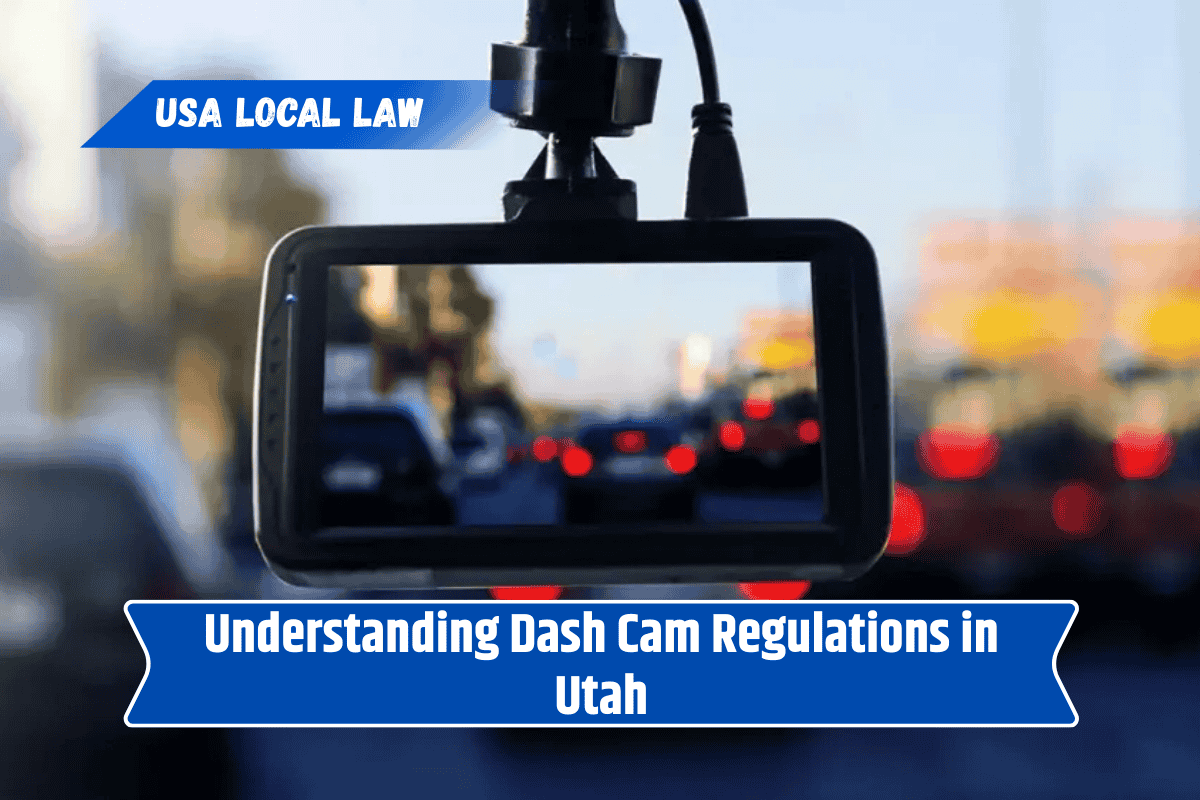Dash cams have become increasingly popular among drivers in Utah for documenting road trips, capturing accidents, or protecting against false claims in traffic incidents.
But before you install a dash cam in your car, it’s important to know the legal boundaries. While dash cams are generally legal in Utah, there are some rules about where you can place them and how you use them—especially when it comes to privacy.
Let’s break down the dash cam laws in Utah in simple, easy-to-understand terms.
Are Dash Cams Legal in Utah?
Yes, dash cams are legal in Utah. You’re allowed to install a camera in your personal vehicle to record footage from the front, back, or even inside the car. However, there are laws that affect how and where you place the camera, and how you handle any audio or video recordings.
Windshield Mounting Rules in Utah
Utah law has specific rules about how much of your windshield can be blocked. This directly affects where you’re allowed to place a dash cam.
According to Utah Code § 41-6a-1635, you cannot place anything on the windshield that obstructs the driver’s clear view of the road.
But there’s an exception:
You can mount a dash cam on the lower left-hand corner or the center upper portion of the windshield, as long as it doesn’t block more than a 4-inch square (on the driver’s side) or a 5-inch square (in the center).
Here’s a quick summary:
| Location on Windshield | Maximum Size Allowed |
|---|---|
| Lower left corner | 4-inch square |
| Center upper portion | 5-inch square |
If your dash cam is too large or installed in the wrong spot, you could get a ticket for obstructed view.
Audio Recording and Consent Laws
If your dash cam records audio, Utah’s one-party consent law applies. This means:
You can legally record a conversation as long as one person in the conversation (which could be you) knows it’s being recorded.
You do not need to inform passengers unless you’re not part of the conversation.
However, if you’re using your dash cam as a rideshare driver (Uber, Lyft, etc.), it’s strongly recommended to notify passengers that audio or video is being recorded to avoid complaints or legal complications.
Can You Record Police or Other Drivers?
Yes. In Utah, it’s legal to record police interactions or other drivers as long as:
You are in a public space (like a road)
You’re not interfering with police duties or breaking traffic laws
The recording is for personal, legal, or insurance use
Is Dash Cam Footage Admissible in Court?
Yes. Dash cam footage is commonly used in Utah courts as evidence in traffic cases, insurance claims, or even criminal investigations. For the footage to be useful:
It must clearly show the incident
The date and time should be accurate
The camera should be properly mounted and functional
Tips for Legal Dash Cam Use in Utah
Mount your dash cam in the approved windshield zones
Make sure the view is not blocked or distracted
Keep audio recordings legal with one-party consent
Let your passengers know if you’re recording
Use footage responsibly, especially in accidents or legal matters
Dash cams are completely legal in Utah and can be valuable tools for protecting yourself on the road. But placement and usage matter. By following Utah’s windshield visibility rules and one-party consent laws, you can enjoy the benefits of dash cam recordings without running into legal trouble.
Whether you’re commuting, driving for a rideshare service, or just want peace of mind, knowing the rules helps you stay protected and respectful of others’ privacy.
